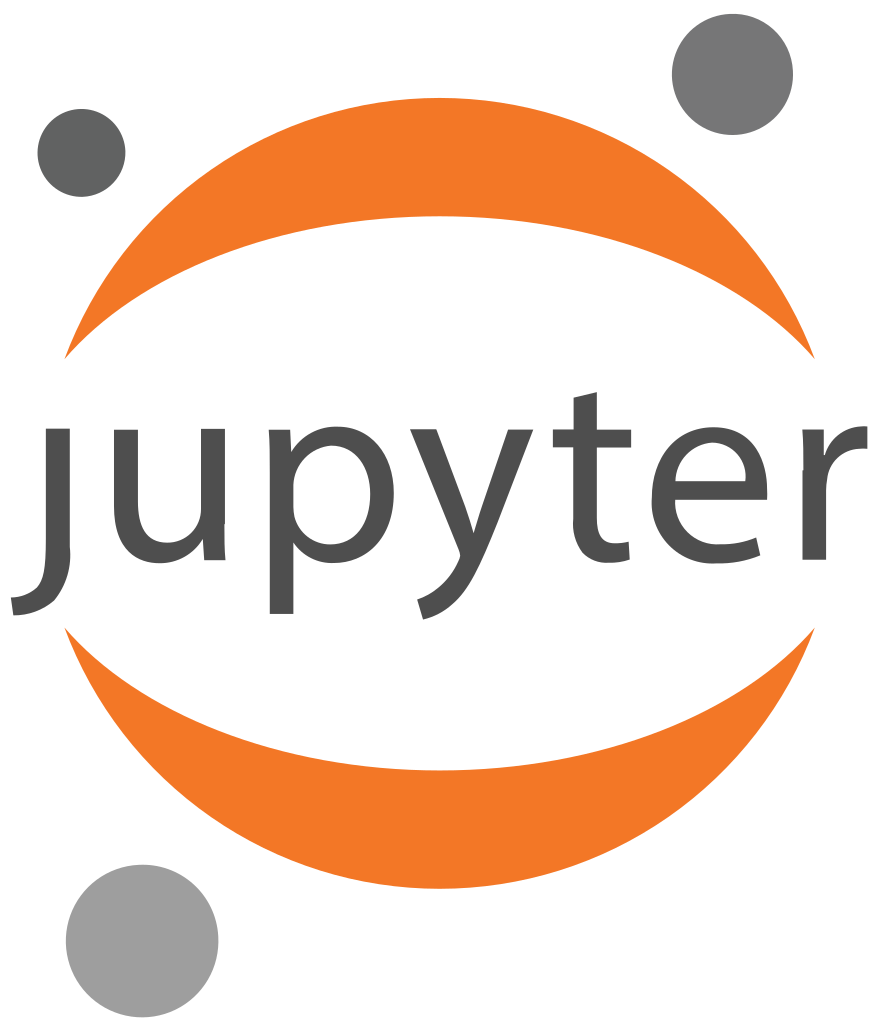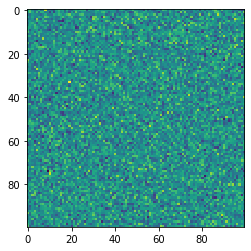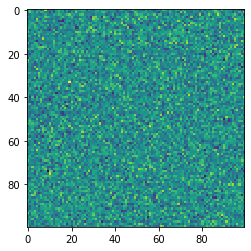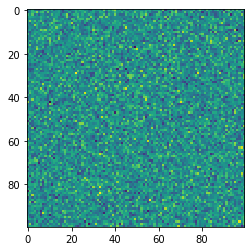import numpy as np
import matplotlib.pyplot as plt
square = np.random.randn(100, 100)
wide = np.random.randn(100, 1000)
# Hide input
square = np.random.randn(100, 100)
wide = np.random.randn(100, 1000)
fig, ax = plt.subplots()
ax.imshow(square)
fig, ax = plt.subplots()
ax.imshow(wide)
# Hide input
square = np.random.randn(100, 100)
wide = np.random.randn(100, 1000)
fig, ax = plt.subplots()
ax.imshow(square)
fig, ax = plt.subplots()
ax.imshow(wide)
square = np.random.randn(100, 100)
wide = np.random.randn(100, 1000)
fig, ax = plt.subplots()
ax.imshow(square)
fig, ax = plt.subplots()
ax.imshow(wide)
# Remove output
square = np.random.randn(100, 100)
wide = np.random.randn(100, 1000)
fig, ax = plt.subplots()
ax.imshow(square)
fig, ax = plt.subplots()
ax.imshow(wide)
## A full-width square figure
fig, ax = plt.subplots()
ax.imshow(square)
## A full-width wide figure
fig, ax = plt.subplots()
ax.imshow(wide)
# Now here's the same figure at regular width
fig, ax = plt.subplots()
ax.imshow(wide)
## code cell in the sidebar with output
fig, ax = plt.subplots()
ax.imshow(wide)
Markdown cell with code in sidebar
a = 2
b = 3
def aplusb(a, b):
return a+b
and now r
a <- 2
b <- 4
a+b
how does it look?
Markdown cell with images in sidebar

More content after the popouts
This is extra content after the popouts to see if cells overlap and such. Also to make sure you can still interact with the popout content. This is extra content after the popouts to see if cells overlap and such. Also to make sure you can still interact with the popout content.
a = 2
This is extra content after the popouts to see if cells overlap and such. Also to make sure you can still interact with the popout content. This is extra content after the popouts to see if cells overlap and such. Also to make sure you can still interact with the popout content. This is extra content after the popouts to see if cells overlap and such. Also to make sure you can still interact with the popout content.
Quotations and epigraphs
This last section shows quotations and epigraphs. First off, we'll have a quotation:
A quote with no attribution:
Here's my quote, it's pretty neat. I wonder how many lines I can create with a single stream-of-consciousness quote. I could try to add a list of ideas to talk about. I suppose I could just keep going on forever, but I'll stop here.
A quote with attribution
Here's my quote, it's pretty neat. I wonder how many lines I can create with a single stream-of-consciousness quote. I could try to add a list of ideas to talk about. I suppose I could just keep going on forever, but I'll stop here.
- Jo the Jovyan
And now here's the same thing with an epigraph!
A quote with no attribution:
Here's my quote, it's pretty neat. I wonder how many lines I can create with a single stream-of-consciousness quote. I could try to add a list of ideas to talk about. I suppose I could just keep going on forever, but I'll stop here.
A quote with attribution
Here's my quote, it's pretty neat. I wonder how many lines I can create with a single stream-of-consciousness quote. I could try to add a list of ideas to talk about. I suppose I could just keep going on forever, but I'll stop here.
- Jo the Jovyan













